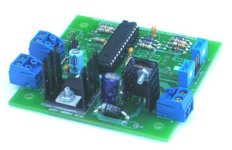jgrreed
Platinum Member
Jer,
I think you can do it. It's not going to be easy, but it sounds like you have available to you what it would take to do it. Personally, the more I think about it, I would try to find an old, or wrecked, or burned up mini-excavator and rape all the parts from it. You could do it with a joystick, but now you're talking getting electronics involved. They do use the system I first talked about in freezers down to -20 Fahrenheit and lower so that's not an issue, but I don't know how they would take getting caught in the rain.
Hmmm. You could use a joystick and pilot hydraulics and switch the pilot circuits with solenoid valves.
Andy
Sorry for my ignorance..... but what is/how does a 'pilot' system work?? Is that the one that is sort of the hydraulic equivalent of a electrical relay??
I'm gonna push for it, and follow some of the awesome guides that I've found on here, like Kenny's and Jimgerken, and look for guidance from all the experience here.... We'll see what Otto has to say in early Jan.
-Jer.

